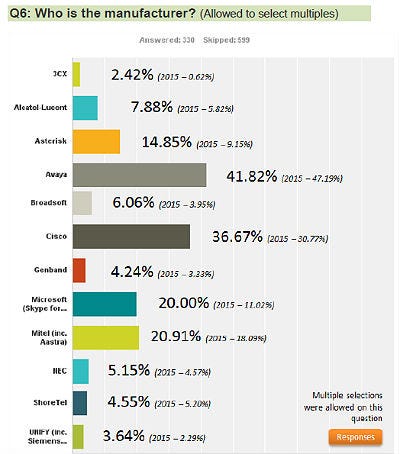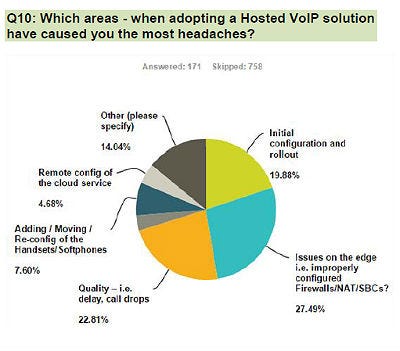Cloud Voice, Broadband Internet Muddle SIP Trunking Landscape
Several factors are impacting the partners and end-users that sell and access SIP trunks.

Cloud voice services and broadband internet are among the numerous factors impacting the partners and end-users that sell and access SIP trunks.
 Companies continue to move from Time-Division Multiplexing (TDM) to Session Initiation Protocol (SIP) trunking, according to a new study by the SIP School — but they’re also migrating from on-premises systems to cloud services.
Companies continue to move from Time-Division Multiplexing (TDM) to Session Initiation Protocol (SIP) trunking, according to a new study by the SIP School — but they’re also migrating from on-premises systems to cloud services.
Most of the more than 900 survey respondents, who varied from internet telephony service providers to actual customers, indicated familiarity with SIP trunking. About 39 percent are using SIP trunks, while about 40 percent are currently providers of SIP trunks.
“The survey results match what we are seeing in markets around the world,” said Kevin Pitts of Oracle Communications. “Customers are ready to buy SIP trunks because their provider is forcing them to, or they can no longer ignore the savings, increased reliability and security.”
But the services and infrastructure accompanying SIP trunking vary, the survey found. For example, the network technologies that go along with it vary significantly: Fifty-seven percent of the companies use MPLS, while half (50 percent) use the internet. Twelve percent also use SD-WAN to “mitigate risk and improve reliability.” Participants were allowed to select multiple responses.
“It’s interesting to see the use of public Internet for SIP trunking,” said Ashish Jain of Genband. “It is certainly a growing trend enabling new OTT players to offer SIP trunk service as well as enabling telco service providers to offer SIP trunk service outside their regions.”
The SIP School said that while companies “have come a long way” in moving from TDM only systems to IP-based PBX (to the point where 83 percent of companies have done IP PBX implementations), organizations often adopt cloud services to their existing communications infrastructure “slowly and carefully.”{ad}
 The study asked companies about which vendors they use for PBX systems and received a long list of manufacturers. Avaya was the most common vendor with 42 percent of respondents using it, but it decreased from 47 percent last year. Cisco jumped from 31 percent to 37 percent, and Microsoft Skype for Business went from 11 percent to 20 percent.
The study asked companies about which vendors they use for PBX systems and received a long list of manufacturers. Avaya was the most common vendor with 42 percent of respondents using it, but it decreased from 47 percent last year. Cisco jumped from 31 percent to 37 percent, and Microsoft Skype for Business went from 11 percent to 20 percent.
“Note that Microsoft Skype for Business has nearly doubled, while others have seen little change or some decline. This shows that desktop UC is now gaining acceptance, often at the expense of IP-PBX or TDM-PBX equipment,” Dialogic’s Alan Percy said.
Respondents also revealed their biggest pain points associated with adopting hosted VoIP solutions. The most common problem was “issues on the edge,” which include improperly configured firewalls and session border control (SBC). The second biggest issue was configuration and rollout.
“Are you going to use an edge device from the provider or your own?” the SIP School asked in its survey. “Whichever, is it configured to avoid issues such as one-way audio, voice delay, call drops etc? Who is going to configure it? Who is going to provision all the VoIP phones – you can probably do it yourself if there are just a few but across a campus with 10,000 handsets (for example) – that’s a big job.”
Read more about:
AgentsAbout the Author(s)
You May Also Like


